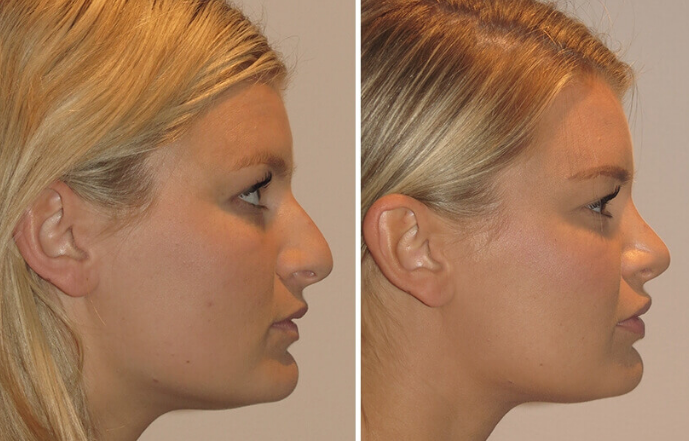Nose Implant in Armenia
Search and Compare the Best Clinics and Doctors at the Lowest Prices for Nose Implant in Armenia

Find the best clinics for Nose Implant in Armenia
No clinics available
Thailand offers the best prices Worldwide
Price: $ 192

- Home
- Armenia
WHY US?
At Medijump, we're making medical easy. You can search, compare, discuss, and book your medical all in one place. We open the door to the best medical providers worldwide, saving you time and energy along the way, and it's all for FREE, no hidden fees, and no price markups guaranteed. So what are you waiting for?

Free

Best Price

Widest Selection

Risk-Free
What you need to know about Nose Implant in Armenia

Nose implant, also known as Augmentation Rhinoplasty, is a cosmetic surgery to change the shape of the nose by placing an implant. The procedure is mostly performed to bring balance to the face since the nose is the most noticeable part of the face. The procedure can be carried out to enhance appearance or repair deformities from an injury or correct a birth defect.
What does a Nose Implant Procedure Involve?
Nose implant can be carried out under general anesthetic or local anesthetic with sedation, depending on the complexity of the surgery and your surgeon's preference. The procedure may be performed through a small incision inside the nostrils (closed rhinoplasty) or through a small external incision at the base of your nose (open rhinoplasty). After making the incision, your doctor will place the implant, which may be synthetic (Gore-Tex, Silicone, Medpor) or autologous (from other parts of your body, such as cartilage from your rib). The final step is placing the nose’s skin and tissue into its original position and stitching up the incisions.
How Long Should I Stay in Armenia for a Nose Implant Procedure?
If no complications arise, you should be able to leave the hospital on the same day. However, if general anesthesia is used during the surgery, you may need to stay overnight. After you are discharged from the hospital, expect to stay in Armenia for 10 to 14 days to attend regular follow-up checkups.
What's the Recovery Time for Nose Implant Procedures in Armenia?
You may experience swelling around your eyes, but this will gradually subside within 3 to 14 days. You should avoid strenuous activity (such as heavy lifting and intense exercise) for 3 to 6 weeks, but you may be able to return to work and some light activities in 1 to 2 weeks following the surgery. The full recovery time until your nose is completely healed is normally 6 months.
What sort of Aftercare is Required for Nose Implant Procedures in Armenia?
After your surgery, you will need to keep your head elevated to prevent aggravated swelling. Do not blow your nose and avoid extreme facial expressions for at least 10 to 14 days following the surgery. Your doctor will give you a recommended diet plan, which may include high-fiber foods such as vegetables and fruits to avoid constipation since constipation can cause strain to the surgery site.
What's the Success Rate of Nose Implant Procedures in Armenia?
Nose implant is known to have a high success rate of about 85% to 90%, particularly when performed by a certified plastic surgeon. Although the success rate is high, you need to be aware of the side effects and risks, such as bleeding, infection, difficulty breathing, permanent numbness around the nose, uneven-looking nose, pain, scarring, discoloration, septal perforation, and allergic reactions to the anesthesia.
Are there Alternatives to Nose Implant Procedures in Armenia?
If you do not want to undergo surgery but you want to change the appearance of your nose, your alternatives are fillers and Botox, which are non-invasive. Both are injected into the skin of your nose to change its shape.
What Should You Expect Before and After the Procedure
Before the nose implant, you may not like the shape, size, or the overall look of your nose, your nose may look smaller or large on your face. After a nose implant, the size of your nose can be augmented and made proportionately to fit your face, which will improve your overall appearance.
Whilst the information presented here has been accurately sourced and verified by a medical professional for its accuracy, it is still advised to consult with your doctor before pursuing a medical treatment at one of the listed medical providers
No Time?
Tell us what you're looking for and we'll reachout to the top clinics all at once
Enquire Now

Popular Procedures in Armenia
Prices Start From $404

Prices Start From $111

Prices Start From $70

Prices Start From $220

Prices Start From $1,945

Prices Start From $101

Prices Start From $101

Prices Start From $500

Recommended Medical Centers in Armenia for procedures similar to Nose Implant

- Interpreter services
- Translation service
- Religious facilities
- Medical records transfer
- Medical travel insurance
- Health insurance coordination
- TV in the room
- Safe in the room
- Phone in the room
- Private rooms for patients available
Nose Implant in and around Armenia
Introduction
Armenia has become a premium destination for medical tourism since the hospitals and clinics in the country are staffed with highly qualified professionals. This country has had a long association with medicine. Its 12th-century physician, Mkhitar Heratsi made a great contribution to numerous medical fields. Also, many Armenians helped to invent important medical innovations, such as the MRI machine and PET scan. These facts, coupled with lower costs high-quality healthcare, draw medical tourists from all around the world and most medical tourists come to this country for cosmetic surgery.
Popular Cities and Regions in Armenia
Armenia’s capital city, Yerevan, is the largest city in the country as well as one of the oldest continuously inhabited cities of the world. This city offers a perfect mix of ancient and modern as century-old buildings sit side by side with modern structures. With outdoor cafes lining its tree-filled boulevard, you can feel the vibrant atmosphere. The second-largest city in Gyumri which is filled with excitement as you will find trendy cafes and nightlife venues that are starting to pop up in the city. You can explore amazing museums, such as the Museum of the Aslamazyan Sisters and the Museum of National Architecture and Urban Life of Gyumri. Another popular place to visit is Dilijan, which is billed as the ‘Switzerland of Armenia.’ This city offers extremely beautiful scenery and pleasant weather.
Transport in Armenia
Zvartnots International Airport is the main international airport in Armenia. This airport serves flights to and from many European and Asian cities, such as Paris, Dubai, Moscow, and Seoul. Since the country is pretty small, there are no domestic flights. Buses and trolleybuses run in cities, while taxis are widely available in city centers. Taxi fares should be negotiated before a journey as taxi drivers tend to overcharge.
Visas in Armenia
Citizens from various countries, including Brazil, Australia, the UK, and the US, can visit and stay in Armenia for up to 180 days. Most other nationalities can apply for a visa on arrival or e-visa. It is best to check with the nearest Armenian embassy or consulate in your area.
Weather in Armenia
December to February are the winter months, with cold temperatures and snowfall in the northern region. Spring, between March and May, is very pleasant with rain showers in March and April. Summer lasts from June to September, characterized by hot temperatures, long and dry days, as well as blue skies. In autumn, the temperatures will become cooler.
Additional Info
- Local Currency: The official currency is Dram (AMD). 1 USD will get you approx. 478.3 AMD.
- Money & Payments: ATMs can be found in all cities. Credit cards are only accepted in Yerevan, so make sure to bring plenty of cash if you plan to travel outside of the capital.
- Local Language: Armenian is the official language spoken by the majority of the country’s population. Russian is widely spoken, while English is gaining popularity in recent years.
- Local Culture and Religion: More than 94% of Armenians are Christians. Other religions, such as Islam and Yazidism are also practiced.
- Public Holidays: Armenia celebrates major Christian holidays, including Christmas Day. The country also celebrates Army Day, Victory and Peace Day, Republic Day, Constitution Day, and Independence Day.
Popular Searches
- Plastic Surgery in Thailand
- Dental Implants in Thailand
- Hair Transplant in Thailand
- Breast Augmentation Thailand
- Gastric Sleeve in Thailand
- Gender Reassignment Surgery in Thailand
- Laser Hair Removal in Bangkok
- Botox in Bangkok
- Dermatology in Bangkok
- Breast Augmentation in Bangkok
- Coolsculpting in Bangkok
- Veneers in Turkey
- Hair Transplant in Turkey
- Rhinoplasty in Turkey
- Stem Cell Therapy in Mexico
- Rhinoplasty in Mexico
- Liposuction in Mexico
- Coolsculpting in Tijuana
- Rhinoplasty in Korea
- Scar Removal in Korea
- Gastric Sleeve in Turkey
- Bone Marrow Transplant in India
- Invisalign in Malaysia
- Plastic Surgery in the Dominican Republic
- Tummy Tuck in the Dominican Republic
- Plastic and Cosmetic Surgery in Poland
- Rhinoplasty in Poland
- Hair Implant in Poland
- Dental Implants in Poland
- IVF in Turkey